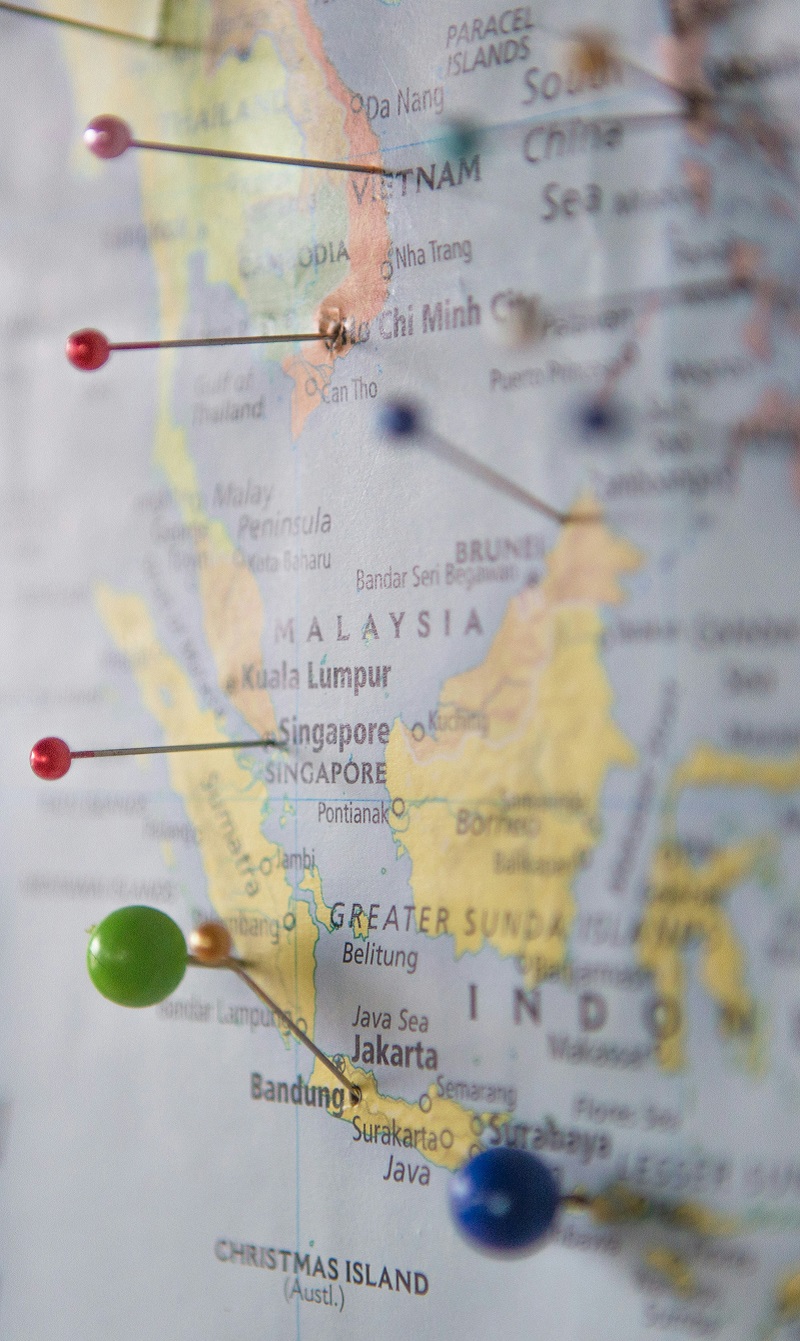Sustainable urban planning
More than half the world’s population lives in cities, with that number expected to grow upwards in the years to come. As that happens, existing infrastructure and urban planning methodology will not be able to cope with the population boom. How are we rethinking urban planning?
Creating smart infrastructures and holistic communities
There is a need to rethink how land-use in cities is managed, balancing economic growth and sustainable practices. The development of smart infrastructures that preserve quality of life and holistic communities for self-sustainable living is what people look for. Speakers at the 10th WIEF in Dubai were brought together to discuss their thoughts on the issue. The moderator for the session was Sara Hope Smith of the City Repair Project in the US.
A historical issue
Rhamis Kent, a consultant with the Permaculture Research Institute as well as Permaculture Sustainable Consulting, Australia, noted that the development of cities was intimately linked to agriculture, going back to the earliest civilisations, and that the problems that plagued these civilisations in the past (such as soil erosion, deforestation or overgrazing) persisted today. ‘Rapid growth and urbanisation is causing increasingly more widespread land degradation, producing profound, far-reaching effects in the form of food and water scarcity, climate change and threats to regional security and stability,’ he said.
To reimagine cities as functionally sustainable spaces, we need to be clear about what makes them unsustainable to begin with, especially with cities being primarily industrial spaces. Kent pointed to land-use as the problem—or rather, ‘land abuse’. Industrialism, which was virtually the only kind of economy of the world, was ‘based squarely on the principle of violence toward everything on which it depends,’ he said.
The continuous supply of uncontaminated water was a basic necessity in any community. As such, Kent said, planners needed to develop agricultural and forestry systems that were soil- and water-conserving and which did not depend on crop monoculture or toxic chemicals. As large scale industrial enterprises were usually the culprits in these practices, planners needed to promote diversified small-scale land economies that were dependent on people who in turn needed to possess the relevant knowledge, skills and attitudes. ‘All this is clear and comfortable enough until we recognise the question: where are these people?’ Kent added.
The Melbourne experience
Rob Adams, Director of City Design for the City of Melbourne, Australia, gave his thoughts on how cities could improve themselves in the future. There are 3.5 billion living in cities today, with that number expected to go up to 6.4 billion in the next 40 years. Traditional methods will not allow cities to deal with such a population boom.
‘What I’m going to tell you today is about doing more with less,’ he said, citing Melbourne as an example. With the city’s population expected to grow from four to eight million in the next 40 years, planners have begun examining the city’s extensive public transport system and were looking at the land that these networks fed into. After removing factors such as heritage sites and dedicated public-use land, planners identified 34,000 sites that could sustain up to 2.4 million people. These sites were relatively undeveloped and the idea was to focus on building them up where their proximity to the public transport network would enable the city to remain walkable. The spaces between these sites would be left as suburbs and green zones. In this way, the city hoped to double its population capacity using only 7.5 percent of available land.
Another strategy was to get people to reinvest in buildings that were already there, allowing them to be redeveloped as residential dwellings. Environmental considerations were also important: planners believed that planting trees could cool the city up to four percent. Currently, the city also collects 20 percent of water used for its landscapes for reuse, while areas of asphalt have been repurposed into parks and green zones. Also, buildings have been designed to be environmentally friendly, with the first six-star green commercial building in Australia having been constructed in Melbourne.
‘We haven’t had to build a whole lot of new infrastructure as the population increased,’ Adams said in closing, adding that a principal challenge for the city was to make better use its existing infrastructure and facilities.
Financial resilience and incentives
Adams explained how part of Melbourne’s planning involved reducing future costs. For example, the practice of not expanding land-use but instead repurposing existing buildings was expected to save the city hundreds of billions of dollars in infrastructure over the next 50 years—money which could be put into other things that added to sustainability such as education or affordable housing. In terms of incentives, he felt that it was important to set smaller targets that were tangible. Climate change, for example, was difficult to consider in its entirety—but approaching the problem from the context of a city might help to identify specific areas (such as saving water, planting trees or utilising public transport) that made it more manageable to think about.
Kent commented that policy changes were needed and noted that in the US, for example, ‘inefficiencies were incentivised’. Since there was a huge amount of capital invested in a certain methodology, he said, there was never any reason to change. This applied in particular to water and food, and he felt that a city ought to be self-sufficient in both.
Water management
On the topic of smart urban planning, Reinier de Graaf—a partner in the architectural firm Office for Metropolitan Architecture in the Netherlands—emphasised the importance of water management as much of the world’s most heavily urbanised zones were in areas at risk of serious damage due to rising sea levels, ‘we ought to fortify our cities against the consequences of water to an extreme extent.’
For example, when the city of New York in the US was hit by Hurricane Sandy in 2012, vast sections of the metropolitan area were flooded and the economy suffered greatly as oil refineries were shut down and the Stock Exchange had to close. Fighting water head-on would entail immense costs, de Graaf said. Instead, he favoured the strategy of working with nature where possible, and only to work against it when it was absolutely necessary. He presented some ideas for the city, which included classical methods of water management such as delaying the water, storage and controlled discharge. As New York City’s biggest problem was that it was almost entirely built up, de Graaf proposed introducing a green belt that would let water in and out, reiterating that coastal flooding could potentially cause devastating economic loss.
The development process
it was not just about technology but also about its users and that planners needed the right type of people or community to use smart infrastructure effectively.
The final speaker was Datuk Ismail Ibrahim, Chief Executive of the Iskandar Regional Development Authority, Malaysia. Ismail said that when it came to the development and growth of cities, there had to be a clear purpose and a clear plan. There had to be implementation, a monitoring process and finally there had to be a review. ‘If you don’t go through that process, you may well fall into the trap of not being able to measure and to really achieve your target,’ he said.
It was also important to identify who the stakeholders were, he said. In the case of Iskandar Malaysia, these were the Malaysian Government, the business community and the people. Planners then considered how the three stakeholders would interact with each other and tailored their plans accordingly. There was also the need to create the right ecosystem for development: in the case of the Iskandar Region, the answer was connectivity. Planners needed to create the necessary infrastructure to facilitate the movement of people and goods within the region and also between Iskandar and other areas.
Speaking on smart infrastructure in cities, Ismail said that it was not just about technology but also about its users and that planners needed the right type of people or community to use smart infrastructure effectively.
Kent concurred, saying that planners had to consider social and economic contexts in the deployment of smart infrastructure, and that different places could have very different criteria.
Adams observed that social cohesion required economic viability and sustainability. Cities needed good connectivity with infrastructure to be shared by all users. Above all, a city needed local character: ‘You’ve got to build for your area…not replicate someone else’s character,’ he said.
He also felt that there was also an issue with the education of city planners. Architecture students, he said, might graduate in designing buildings—without learning about the basics of a city or being able to understand them. As such, he argued that a base understanding of cities needed to be reintroduced into education. He also felt that governments likewise needed to address deficiencies in their understanding of cities: ‘I think we’ve got a real problem both in the structure of our governments and the structure of our education, and I think this is something we need to look at very carefully,’ he said.
Past and future impact
On the topic of how city planning could have effects even hundreds of years in the future, Kent said that some of the greatest innovations could be found in history and that some of the best examples came from the Muslim world. He referred to the Filāḥa Texts Project, a collection of classical Arabic texts on agriculture and land management, which was in the process of being translated. He felt this presented an opportunity to revive knowledge of the Islamic Golden Age as planners looked for new approaches today.
Ismail noted that there had been little change in the methodology of land-planning for hundreds of years. One element was what he called “stereotyping” where land-use was planned based on household incomes. He felt that planners should avoid this approach today and that they should attempt a more equitable distribution of resources. ‘I think in Islam…there is a demand for us to look at this element of inclusiveness [in the distribution of resources],’ he said.
Conclusion
The speakers largely agreed on sustainability and how to achieve it through careful planning by keeping people and finances in mind. They also emphasised the need for localised and self-sufficient economies that encouraged positive socioeconomic change.
In closing, Adams described rapid urbanisation as one of the most positive developments in the world today; and since families invariably became smaller when people moved to cities, it was the best way to get the world population under control. However, he lamented that national governments did not prioritise the economies of cities: ‘I can’t work out why they have not realised the importance of cities and their economies, which will help us solve the problems of climate change, social equity and cohesion as well as economic vitality,’ he said.
Ismail called for a continuation of the dialogue process so the urban planning community could benefit from shared experiences, saying: ‘We have to accept [that] urbanisation will continue to happen and it will pose new challenges for cities and regions.’
The public’s role in resource management
Kent said that in a first-world economy based on consumer spending, there was no incentive for individuals to take responsibility of the things they consumed. This could lead to situations where the bad effects of a certain activity would be localised in a faraway region that would furthermore gain little or no economic benefit from the exchange.
Adams used Melbourne’s water shortages as an example of how incentives can mobilise the public positively. After the Government implemented a cap on water consumption per person, people actually started competing over how little water they could use as a “matter of pride”. The use of solar panels followed a similar path despite not having government endorsement. He felt that if the authorities could inform people about the urgency of a specific problem, they would become the driving force behind the solution.
Kent also noted that if populations consumed the goods and services they produced, this would not factor into GDP calculations, which in turn implied that localised economic engines would appear not to contribute economically despite providing clear benefits. De Graaf agreed, describing the situation as a ‘systemic imperative in our current economic system that was in the way of sustainability.’
The rich-poor divide
Ismail said that planners and designers should not necessarily cater to the status quo. For example, if there was a housing trend affecting three segments of household income, the normal response was to build three segments of housing. But, he asked, why not create opportunities for the lower-income group to increase its wealth instead? Sustainability meant looking at the bigger picture and planning for the future immediately.
___________________
This report is based on a session from the 10th WIEF.





